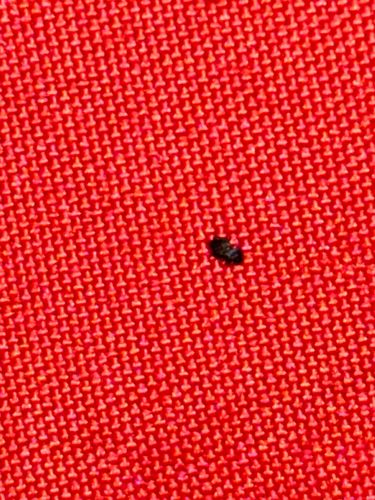Carpet Beetle (likely Black Carpet Beetle)
Scientific Name: Attagenus unicolor (for Black Carpet Beetle, others exist within the family)
Order & Family: Coleoptera, Dermestidae
Size: 2-5 mm (adults)

Natural Habitat
Indoors, commonly found in homes, museums, and warehouses. They prefer dark, undisturbed areas such as under carpets, in closets, pantries, and attics.
Diet & Feeding
Adults feed on pollen and nectar outdoors. Larvae are the destructive stage, feeding on a wide range of organic materials including natural fibers (wool, silk, fur, leather, feathers), dried animal products (dead insects, pet food, taxidermy), and sometimes stored food products (grains, cereals).
Behavior Patterns
Larvae are light-avoiding and tend to feed in hidden areas. They undergo several molts, leaving behind shed skins, which are often the first sign of an infestation. The life cycle can take several months to a year depending on conditions. Adults are attracted to light and may be seen near windows.
Risks & Benefits
Potential Risks: Significant household and museum pests, causing damage to textiles, clothing, carpets, upholstered furniture, and museum specimens. They do not bite humans but can cause allergic reactions in some individuals due to larvae hairs. Potential Benefits: As scavengers, they play a role in decomposition in natural environments.
Identified on: 9/6/2025